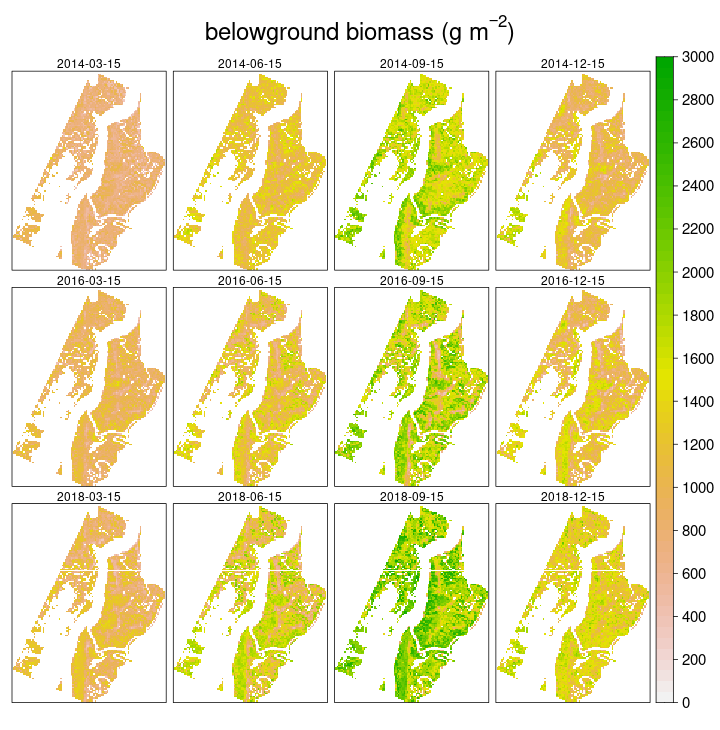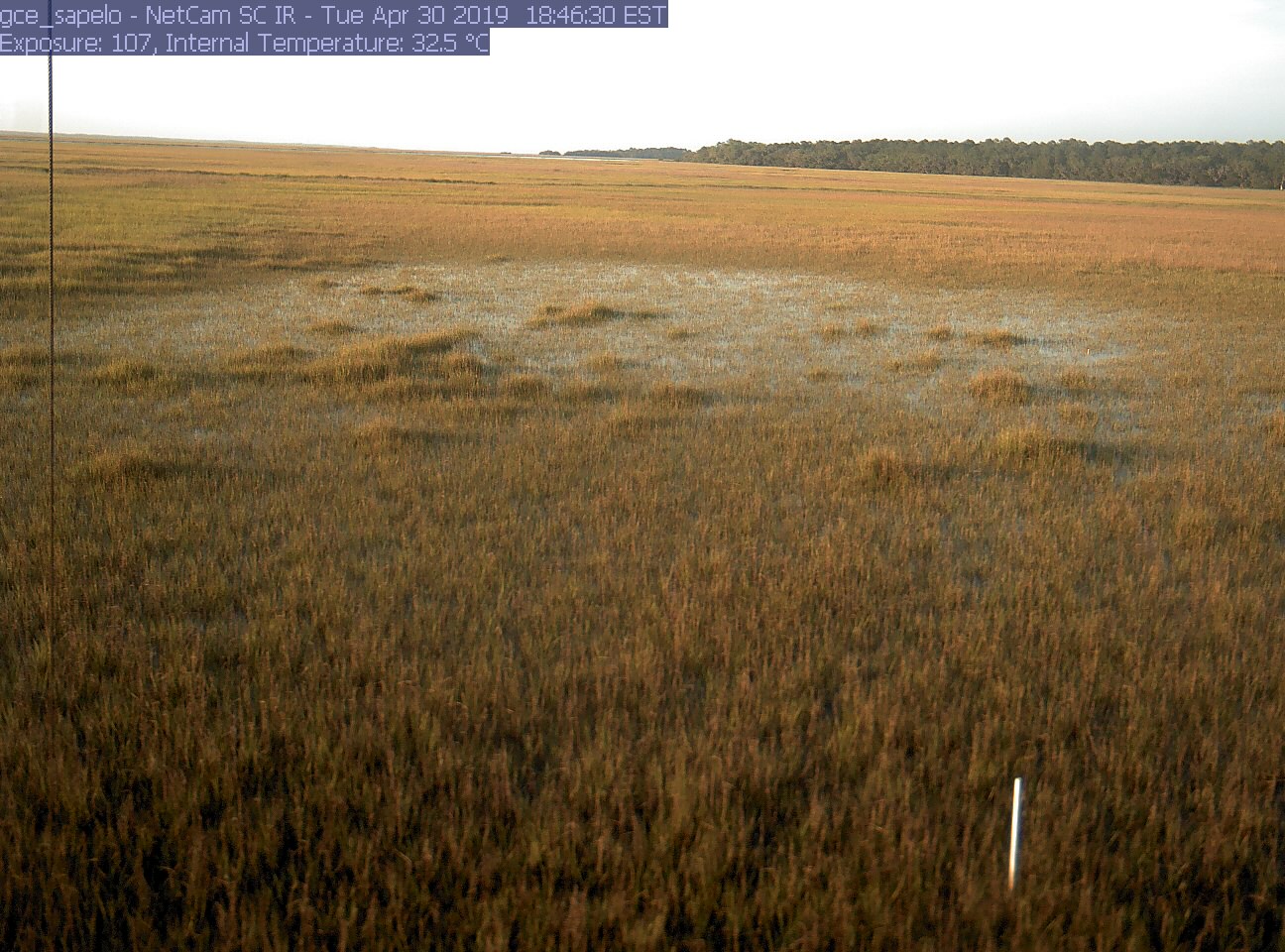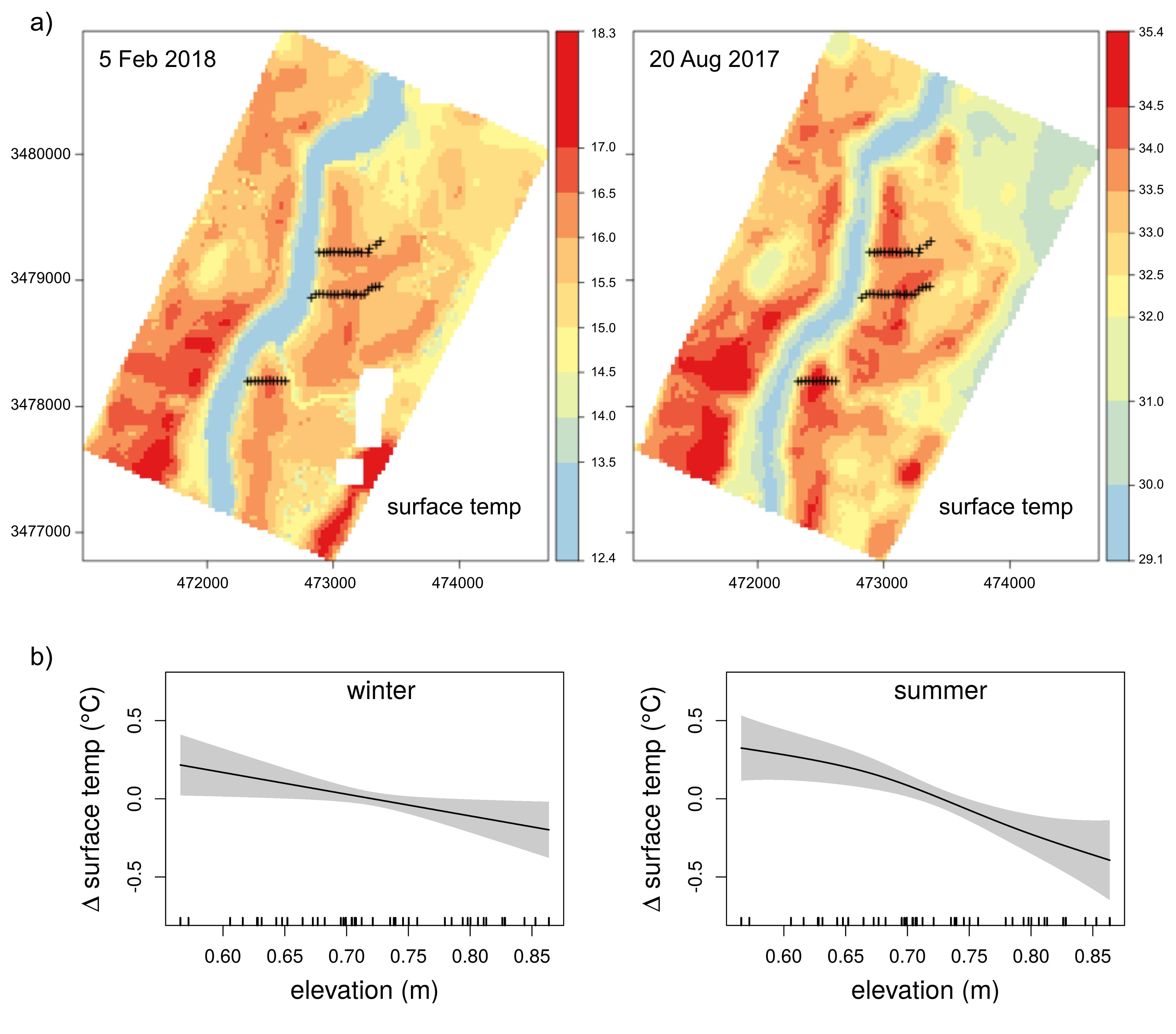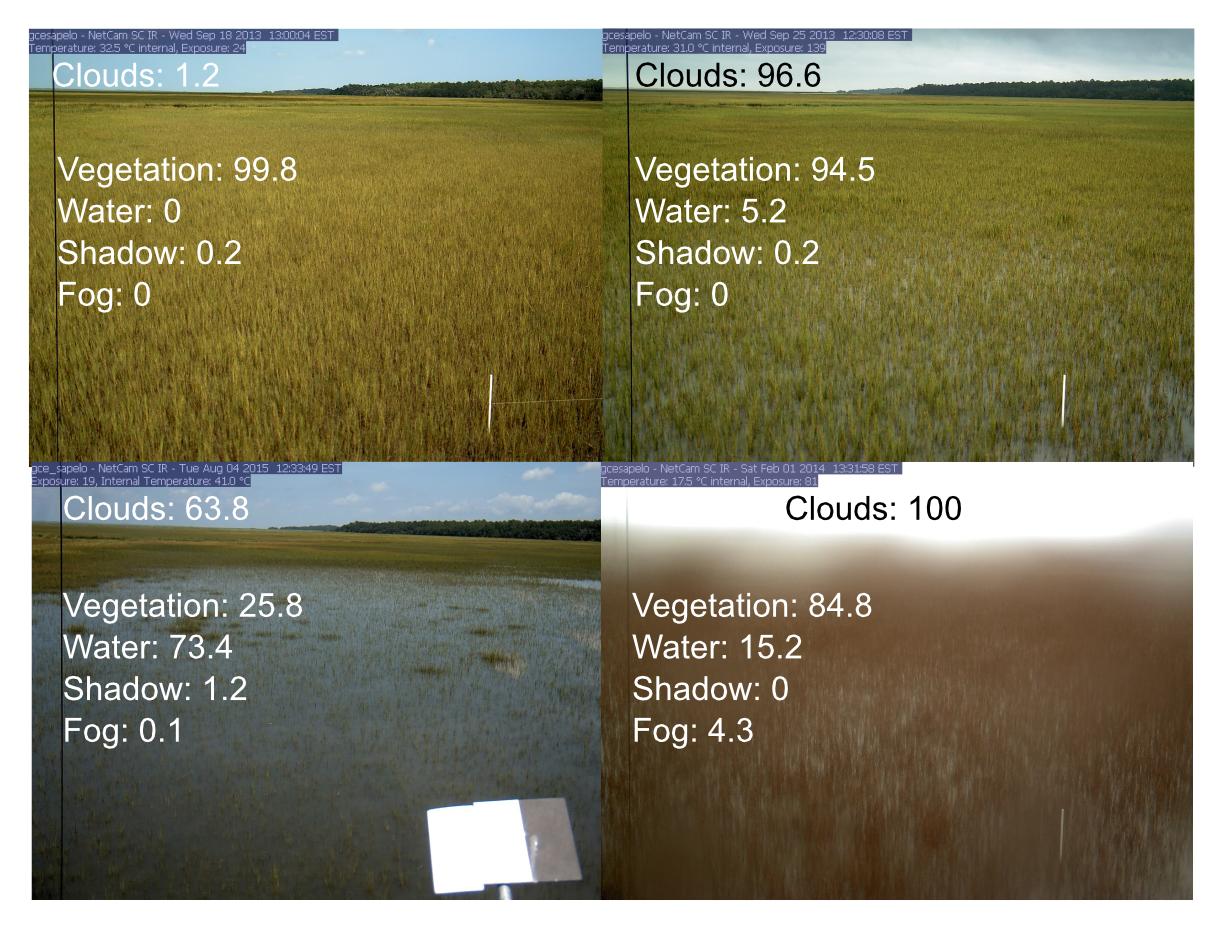Recently published projects on GitHub

BERM: The Belowground Ecosystem Resiliency Model for tidal wetlands
The Belowground Ecosystem Resiliency Model (BERM), a geospatial informatics tool for assessing spatiotemporal pattern and process in Spartina alterniflora belowground biomass. This information is important for assessing ecosystem resiliency to sea level rise, carbon sequestration potential, and forecasting potential future change.
View on GitHub View Paper
Tidal Marsh Phenometrics
We used high-frequency “PhenoCam” data to examine phenology of Spartina alterniflora, a foundation species native to salt marshes on the US East and Gulf coasts, and a common colonizer elsewhere. We found that spring green-up varied at fine spatial scales as a result of elevation-driven changes in soil temperature, and these spatial differences were similar to long-term change from climate warming.
View on GitHub View Paper
Microspatial Variation in Tidal Marsh Soil Temperature
We used field-measured soil temperature and Landsat 8 land surface temperature to demonstrate that small elevation differences were negatively correlated with significant soil temperature variation on the marsh platform, irrespective of tidal flooding. Biological reactions are temperature-dependent, and these findings indicate that metabolic soil processes should vary over short distances in tidal marshes. This is important for accurately estimating marsh metabolism and predicting how changes in temperature will affect future productivity.
View on GitHub View Paper
The PhenoCam Smart Classifier
We created the smart classier to identify optimal digital images in a PhenoCam time series for phenology analysis in tidal salt marshes. The smart classifier is a within image pixel classification algorithm that accounts for image context. It can be used to filter PhenoCam imagery or to monitor changes in environmental conditions that are evident within the imagery.
View on GitHub View Paper